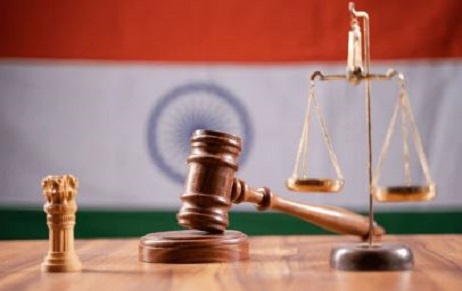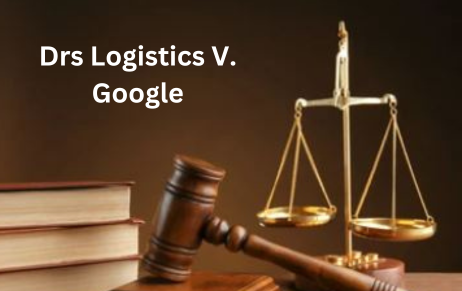ABSTRACT The project employs doctrinal research methods, i.e. secondary research which involves writing on basis…
Patentability of Genetically Modified Plant Breeds: The Monsanto Conclusion
On January 08, 2019, the Supreme Court of India, in the matter of Monsanto Technology LLC v. Nuziveedu Seeds Ltd.[1] held that genetically modified cotton seeds were patentable, and allowed U.S. company Monsanto to file their patent claims. The bench, comprising of Justice Rohinton Fali Nariman and Justice Navin Sinha, set aside the order of the Division Bench of the Delhi High Court, which had held such claims to be inapplicable in India. The Single Judge of the High Court had granted an interim injunction against any sale of Bt cotton seeds using the patent of Mahyco Monsanto Biotech, Monsanto’s Indian arm.
On 21.2.2004, the plaintiffs had entered into a 10-year sub-license agreement with the defendants to develop “Genetically Modified Hybrid Cotton Planting Seeds” using the technology provided by the plaintiffs, after paying a license fee for the same. However, the agreement was terminated by the plaintiffs on 14.11.2015 due to disputes in lieu of the price control regime by the government, which the defendants asked the plaintiffs to adhere to.
The defendants in the suit argued that their rights were statutorily protected under the Protection of Plant Varieties and Farmers’ Rights Act, 2001 (hereinafter referred to as ‘the PPVFR Act’). It was argued that the patent was bad as unlike the “complex biological processes” adopted by the defendants, “claims 1-24 were “process claims” concerning genetic engineering or biotechnology method to insert “Nucleic Acid Sequence” (NAS) into a plant cell as in claim 25-27” were practiced in laboratory conditions. Basically, it was contended that NAS could not reproduce itself and could only impart insect resistance through its Bt trait when it was injected into another organism, thereby resulting in a process that was not biological, and hence patentable. Thus, infringement was denied in lieu of Section 3(j) (the Act) of the Patents Act, 1970 concerning plants and seeds with DNA sequences. In addition, revocation of the concerned patent was sought under Section 64 of the Act.
The Single Judge prima facie observed that the termination was not of any significant consequence as the plaintiffs had benefitted from the agreement all these years and hence held the action unjustifiable. The Division Bench accepted the counter-claim of the defendants and upheld their contention. Dismissing the appeal filed by the plaintiffs, the patent exclusion under Section 3(j) of the Act would stand and the plaintiffs could register their patent under the PPVFR Act. However, the suit continued with regard to damages and other reliefs.
In the Supreme Court, the advocates for the plaintiffs contended that the issue of patentability was never an issue in the suit and that the issue was solely about patent infringement. It was argued that the issue of patent exclusion was a mixed question of law and fact. The impugned order did not restrict itself to the “process claims” (25-27) and went further and held the 1-24 claims also, as bad in law, which was contended. Even the Single Judge had admitted that the issue of patentability required expert evidence and could be decided only when during the final trial of the suit and not summarily. It was also brought to the attention to the court that this patented technology had the highest number of seeds sold, and that the plaintiffs never intended to sue any Indian farmer individually. It was argued that the PPVFR Act and the Act were not complementary but were mutually exclusive in nature. Hence, it was contended that such a DNA construct/gene was not a plant variety as it did not come within the definition of “plant grouping”, i.e. the lowest ranking of any plant – a species. Construing Section 2(za) read with Sections 14 and 15, it did not fall within the PPVFR Act. The advocates for the petitioners also went on to say that this required human intervention and was by no means purely a biological process.
The advocates appearing on behalf of the defendants contended that such genetically modified plant breeds could not be patented as the same would go against the scheme envisaged under the PPVFR Act. Such donor seeds had to be registered under this statute and were entitled to its constituent benefits listed under Section 26 as well. It was argued a proper construction of asserted claims and a determination of how the product infringes this claim, has to be proved in cases of patent infringement. In this case, the plaintiffs argued that there was only an improvement of a prior, existing art form and this precluded the plaintiffs from claiming a patent for the same. It was further argued that even though it was a gene variety, the process made it an inherently transgenic plant. Further, this passes onto the progeny plants and infiltrates into every cell of the plant, even to the extent of going to the sub-cellular level. and that this irreversible biological process made the characteristics pivotal to the plant. Thus, an effective meaning of this process did not construe it to be a product claim. In addition, the insertion of NAS into the Indian varieties of plants developed an entirely new variety of plants. The use of such varieties under the PPVFR could not be undone by patenting the same. The lack of any inventive step and any industrial application was also argued for the applicability solely of the PPVFR Act and not the Patents Act, 1970. A conjoint reading of Section 2(j) and 3(c) of the Act did not allow biological processes to be patented. Moreover, no patent claims of this nature could deprive farmers from using this technology, as the powers under Section 48 of the Act could only be exercised against biotechnology companies seeking to exploit it. This would hold true, whether seen from the lens of the Patents Act or the PPVFR Act. As a last resort, it was prayed that the matter be heard fresh by the Division Bench only on the injunction matter.
After listening to the submissions of the counsels, the Supreme Court agreed with the decision of the Single Judge. It opined that owing to the complicated nature of this matter, the existing patent should not have been summarily adjudicated. The Division Bench, in their opinion, should have confined themselves to adjudging whether the injunction was valid or not. It held –
“The Division Bench ought not to have examined the counter claim itself usurping the jurisdiction of the Single Judge to decide unpatentability of the process claims 1-24 also in the summary manner done. Summary adjudication of a technically complex suit requiring expert evidence also, at the stage of injunction in the manner done, was certainly neither desirable or permissible in the law. The suit involved complicated mixed questions of law and facts with regard to patentability and exclusion of patent which could be examined in the suit on basis of evidence.”
The apex court then went onto examine Section 64 of the Act, dealing with revocation of patents. The same, in their opinion, necessarily presupposed valid consideration of all claims and consequent counter-claims. The bench stated that Section 9 and 10 of the Civil Procedure Code, 1908 dealt with the procedure of such suits all the way till the decree is passed. The court held that only in certain situations could a suit be tried summarily, and that the Division Bench erred in disposing of the suit without hearing all the arguments and assessing all the evidences before it.Referring to Alka Gupta v. Narender Kumar Gupta[2], it was seen that when the case is being tried on preliminary issues, an inquiry into other matters in the case could not be done without a trial. It said that the injunction granted by the Single Judge was valid and that no further interference was needed. Consequently, it set aside the order of the Division Bench and remanded the matter to the Single Judge for early disposal of the suit.
The Supreme Court of India has been, and rightfully so, strict with respect to the procedural aspects of intellectual property disputes which come up in appeal. Very often, High Courts across the country overstep their mandate and decide complex matters of law while deciding on a particular point. This has sought to be prevented by the Court, while allowing the lower courts to hear matters of such importance. Hence, the merits of the case were heard and the injunction was restored. Additionally, the Single Judge was allowed to dispose of the case after hearing both sides on merits. Purely from a legal standpoint as well, the courts have been encouraging towards newly developing patentable technologies in the field of agriculture. While some argue that this affects the rights of farmers, the same cannot be at the cost of invention. Hence, this judgment is important to set the tone and encourage such research endeavors for future progress.
Author: Dushyant Kishan Kaul, Jindal Global Law School, Sonipat, Haryana, Intern at Khurana & Khurana, Advocates and IP Attorneys. In case of any queries please contact/write back to us at pratistha@iiprd.com.
References:
[1] 2019 SCC OnLine SC 25
[2] (2010) 10 SCC 141



